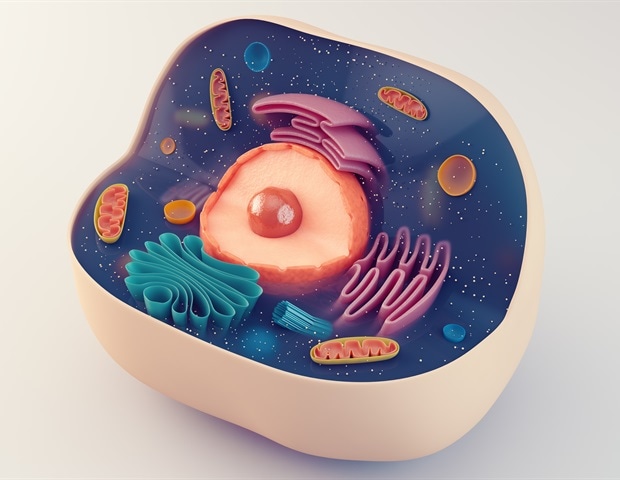We are the first group to demonstrate the roles of Plscr1 in a mouse-adapted human IAV-infected mouse model, to implicate its IFN-λ signaling-related mechanisms, and to elucidate the cell types that are responsible for Plscr1-mediated anti-influenza activities. We established Plscr1-/- mice and found them more susceptible to IAV (WSN) compared to WT mice, as evidenced by greater weight loss in both sublethal and lethal infection and poorer survival in a lethal infection. Further examination of infected lungs provided the first in vivo evidence demonstrating that Plscr1 suppressed human IAV replication. This observation aligns with a previous report indicating that PLSCR1 interacts with the IAV NP, thereby impairing its nuclear import in vitro (Luo et al., 2018). Notably, while differences in viral copy numbers were only observed at the early stages of infection, coinciding with a significant increase in Plscr1 transcription, these changes had profound implications for host fitness. Therefore, as one of the earliest induced ISGs, Plscr1 constitutes the frontline defense against influenza infection.
While the only previously published Plscr1-/- mouse flu model focused on an H1N1 SIV infection (Liu et al., 2022), our data showed both similarities and discrepancies. First, while both studies observed that Plscr1 promoted survival during IAV infection, SIV-infected Plscr1-/- mice exhibited weight loss similar to WT mice. Furthermore, while both models attributed the lower survival rate in Plscr1-/- mice to increased viral replication, SIV-infected Plscr1-/- lungs exhibited higher viral titers across all examined time points, from 1 to 7 dpi. Intriguingly, contrary to our observations, Plscr1 expression was markedly decreased in SIV infection. Given previous in vitro studies demonstrating PLSCR1 induction by IAV (WSN) (Luo et al., 2018) and type 1 IFNs (Zhou et al., 2000; Dong et al., 2004; Lizak and Yarovinsky, 2012), we propose that the contradictory trend observed by Liu et al. may be attributed to distinct properties of SIV, such as viral replication rate, both the cellular tropism and the tissue tropism (proximal or distal lung), or antigen variation which may affect direct interaction with PLSCR1, innate sensing of the infection, or recognition by the adaptive immune response.
The delicate balance between immunity and immunopathology plays a pivotal role in determining host fitness during viral infections. To interrogate immunopathology in the lungs, we accessed the BAL, histology, and interferon expressions. BAL from Plscr1-/- mice were highly enriched with inflammatory neutrophils and lymphocytes, which were likely attracted by robust IFNs and other chemokines. Consistently, Plscr1-/- mice exhibited more severe lung damage and a greater extent of affected areas. These findings indicate that Plscr1 not only enhances immunity but also mitigates immunopathology. Importantly, regardless of excessive production of antiviral IFNs in Plscr1-/- mice, they failed to effectively control the initial viral infection. This suggests that the absence of Plscr1 impairs the IFN signaling pathway, highlighting the crucial role of Plscr1 in facilitating effective antiviral responses.
Although type 1 and 3 IFNs may share similar downstream pathways, they rely on distinct receptors for signaling. Consistent with previous findings (Sheppard et al., 2003), Ifn-λr1 was detected in respiratory epithelium, including ciliated epithelial cells, club cells, and AT2 cells during infection. Loss of Plscr1 impaired Ifnlr1 transcription in IAV infection, with this transcriptional difference translating into protein expression. IFN-λ is crucial for early viral control within the initial days of infection without igniting unnecessary inflammation and compromising host fitness (Galani et al., 2017). With limited Ifn-λr1 expression, Plscr1-/- mice were unable to mount a robust type 3 IFN response to control early viral infection. Instead, they relied largely on type 1 interferons, which succeeded in eliminating IAV at later time points, but led to exaggerated immunopathology. Furthermore, our observations of enhanced neutrophilia, lung injury, and lethality in Plscr1-/- mice align with findings reported in Ifnlr1-/- mice in IAV infection (Galani et al., 2017). However, a discrepancy in Ifnlr1 expression over the course of infection was observed between the RNA sequencing and the qRT-PCR data. While RNA-seq showed further upregulation of Ifnlr1 at 7 dpi (Figure 3A), qRT-PCR indicated a rapid downregulation at the same time point (Figure 3B). The reason for this time-dependent discrepancy remains unclear and warrants further investigation. In addition, this study did not definitively establish causality between reduced Ifn-λ signaling and the observed in vivo phenotype. The increased morbidity and mortality in Plscr1-/- mice could also be attributed to elevated Tnf-α levels and associated lung damage. Given that proinflammatory cytokines and/or enhanced lung damage are known contributors to influenza morbidity and mortality, future work will be needed to disentangle the impacts of TNF-α, IL-1β, and other inflammatory cytokines from those of the IFN pathway to fully clarify the role of Plscr1 in antiviral defense.
PLSCR1 expression was increased in response to IFN-λ in human airway epithelial cells, consistent with previous studies (Xu et al., 2023). While PLSCR1 typically localizes on the cell membrane and in the cytoplasm, it translocates into nucleus to bind the IFNLR1 promoter upon IAV infection, thereby regulating IFNLR1 transcription. The nuclear localization and functions of PLSCR1 have been extensively documented in previous studies (Huang et al., 2020; Chen et al., 2013; Wyles et al., 2007; Huang et al., 2015). Relevantly, IFN-α promotes the nuclear translocation of PLSCR1 in breast cancer cells (Wiedmer et al., 2003). Therefore, it is highly plausible that the nuclear trafficking of PLSCR1 in airway epithelial cells is similarly stimulated by IFN-α produced during IAV infection, but further evidence is demanded. Additionally, the precise binding site for PLSCR1 within the IFNLR1 promoter and the binding motif on PLSCR1 remain unknown. Previous bioinformatics predictions revealed that the –430~–421 segment of IFNLR1 promoter likely contains binding sites for a number of transcription factors (TFs) with important regulatory functions (Ding et al., 2014). Further mutagenesis studies, such as truncations or single-nucleotide mutations within these sequences, could be done to identify the specific motif for PLSCR1 binding. Finally, it is not clear whether PLSCR1 directly activates IFNLR1 expression by acting as a TF, or as a co-factor enhancing other TF’s transcriptional activity. Co-immunoprecipitations could be pursued in future to explore the binding potential between PLSCR1 and other known TFs for IFNLR1, such as NF-Y (Ding et al., 2014).
In addition to activities in the nucleus, PLSCR1 has been shown to interact with multiple proteins on the plasma or endosomal membrane (Talukder et al., 2012; Guo et al., 2020; Sun et al., 2002; Li et al., 2006; Amir-Moazami et al., 2008). Here, we reported a novel interaction between PLSCR1 and IFN-λR1 on airway epithelial cell membrane in vivo and in vitro, confirmed with both coimmunoprecipitation and immunofluorescence. Since their interaction was significantly enhanced after IAV infection, we speculate that membrane-bound PLSCR1 is a positive regulator of IFN-λR1 signaling. One plausible mechanism is that PLSCR1 facilitates the intracellular trafficking of IFN-λR1, akin to its role in assisting the trafficking of other membrane receptors (Talukder et al., 2012; Sun et al., 2002; Kametaka et al., 2003).
The subcellular location of PLSCR1 is vital not only for interactions with host components, but also for direct viral control. We found that nuclear PLSCR1 is both necessary and sufficient for viral control in airway epithelial cells, whereas membrane PLSCR1 provides only partial protection against IAV infection. These findings are not surprising, as the previously reported anti-flu mechanism of PLSCR1 also relies on its nuclear localization signal to restrict the import of IAV NP (Luo et al., 2018). Furthermore, besides IFNLR1, PLSCR1 enhances the expression of a select subset of ISGs in IAV infection as well, a mechanism potentially mediated by nuclear PLSCR1 on ISG gene transcription (Dong et al., 2004). On the other hand, membrane PLSCR1 may modulate the JAK/STAT signaling pathway, thereby augmenting the optimal anti-viral activity of these ISGs (Dong et al., 2004). We found that membrane PLSCR1 interacts with IFN-λR1 protein in IAV infection, suggesting that it could facilitate viral elimination to some extent.
PLSCR1 is most well-known for its scramblase activity that favors PS exposure, apoptosis, and phagocytosis (Guo et al., 2020; Zhao et al., 1998). Using an enzymatically inactive mutant of PLSCR1, we uncoupled its lipid scramblase activity from anti-influenza activity. There are several potential explanations for this finding. First, our epithelial cell culture lacked phagocytes, therefore, the impact of apoptosis followed by phagocytosis induced by PLSCR1 is minimal. Future studies using mice that harbor Plscr1(F281A) mutation would be needed to verify the role of lipid scramblase activity and epithelial cell apoptosis in the presence of phagocytes. Second, PLSCR1 exhibits only weak enzymatic activities compared to other members of lipid scramblase family, possibly due to its vastly different central β-barrel structure (Xu et al., 2023; Tang et al., 2022). PS externalization may be compensated by other more potent scramblases. Importantly, the lipid scramblase activity of PLSCR1 has been shown to be dispensable for its anti-SARS-CoV-2 function in a similar manner (Xu et al., 2023), suggesting a general lack of significance for its enzymatic activity in viral infections.
Although PLSCR1 has several previously described anti-influenza functions, including interfering with viral nuclear import (Luo et al., 2018), regulating TLR9 signaling (Talukder et al., 2012), and potentiating the expression of other ISGs (Dong et al., 2004), our studies have clarified the relative contribution of the type 3 IFN pathway to Plscr1-mediated anti-influenza immunity using Plscr1-/-;Ifnlr1-/- mice. We observed that Ifnlr1-/- mice were more susceptible to IAV infection than Plscr1-/-, suggesting that the complete loss of Ifn-λr1 results in worse protection than impaired Ifn-λr1 upregulation alone. Moreover, the previously identified anti-IAV functions of Plscr1 do not appear sufficient to compensate for the loss of Ifn-λr1 signaling in Ifnlr1-/- mice. The absence of further disease exacerbation or increased viral titers in Plscr1-/-;Ifnlr1-/- mice compared to Ifnlr1-/- mice indicates that the anti-influenza activity of Plscr1 is largely dependent on Ifn-λr1.
While scRNA-seq analysis revealed that endothelial cells express Plscr1 most abundantly in the lung, they are not the major target of IAV infection, and IAV does not efficiently replicate in them (Han et al., 2021). Instead, airway epithelial cells are the frontline defense against respiratory pathogens, with ciliated epithelial cells being the only cell type that express α2,3-linked SA, the primary influenza virus receptor in the mouse airway (Ibricevic et al., 2006). Coincidently, our scRNA-seq results showed that ciliated epithelial cells not only had the highest aggregated expression of Plscr1, but also had the most significant increase in Plscr1 expression in early IAV infection at 3 dpi. Experiments with Plscr1floxStop;Foxj1-Cre+mice further supported ciliated epithelial cell-dependent protection against IAV, with improved immunity and viral clearance, and dampened immunopathology as early as 3 dpi. These findings suggest that as a result of enhanced Ifn-λr1 due to Plscr1 overexpression, type 3 interferons were able to exert their advantages being the earliest produced interferon, mounting both antiviral and anti-inflammatory responses in ciliated epithelial cells. To further establish the causal relationship between Plscr1 and Ifn-λ signaling in airway ciliated epithelial cells, future experiments should focus on specifically overexpressing Plscr1 in ciliated epithelial cells on an Ifnlr1-/- background by breeding Plscr1floxStop;Foxj1-Cre+;Ifnlr1-/- mice. In addition, ciliated epithelial cells isolated from Ifnlr1-/- murine airways could be transduced with a Plscr1 overexpression construct. We hypothesize that overexpression of Plscr1 in ciliated epithelial cells would not be able to rescue susceptibility in Ifnlr1-/- mice or cells, as the Plscr1-/-;Ifnlr1-/- mouse model suggests that Plscr1’s Ifn-λr1-independent anti-influenza mechanisms are likely minor compared to its role in upregulating Ifn-λr1.
Taken together, our findings highlight the essential role of PLSCR1 in the regulation of IFN-λR1 transcription in nucleus and expression on plasma membrane, both in vitro and in vivo. These mechanisms are crucial for inhibiting viral spread, reducing inflammation, and enhancing overall host fitness during IAV infection. Furthermore, we found that the enzymatic activity of PLSCR1 is dispensable for its anti-influenza function. Finally, ciliated airway epithelial cells are the primary cell type in the lung for mounting PLSCR1-mediated anti-influenza responses. The potential of PLSCR1 agonists that target ciliated airway epithelial cells as therapeutic treatments for influenza holds promise for future medical interventions. Moreover, our results have the potential to impact the classical yet evolving field of IFN signaling. Not only do these findings elucidate and expand our understanding of newly discovered IFN-λ signaling, but they also shed light on the specific cell types and conditions under which IFN-λ signaling is modulated. Given the significance of IFN-λ signaling in various infectious diseases, these insights may pave the way for innovative therapeutic approaches targeting corresponding regulatory molecules in the treatment of other microbial infections in addition to influenza.








